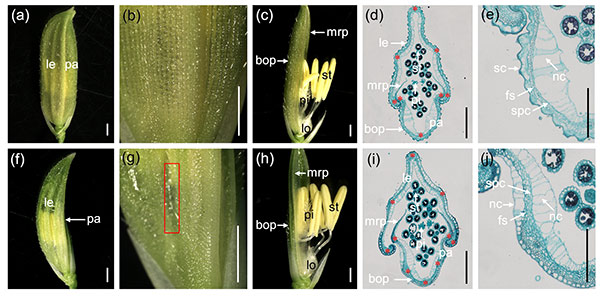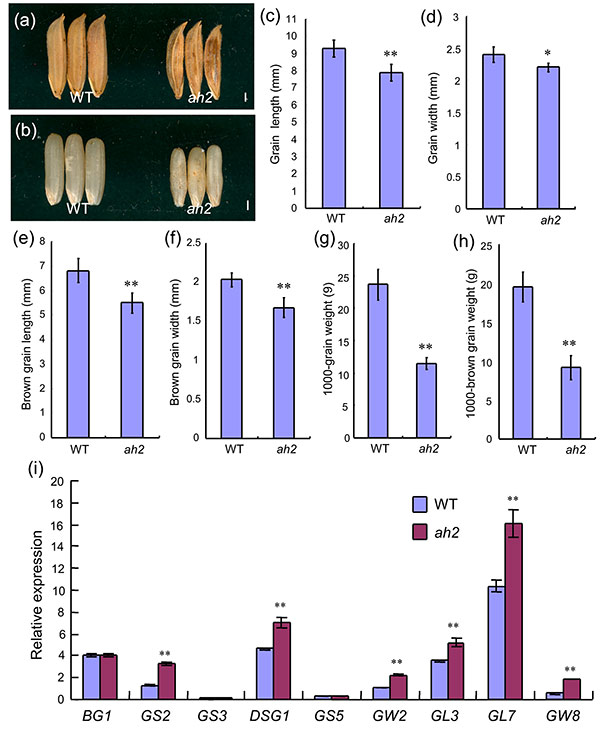






AH2 encodes a MYB domain protein that determines hull fate and affects grain yield and quality in rice
September 18th, 2019
Improved grain yield and quality are the eternal pursuit of rice breeders. Thousand-grain weight, an essential component of the former, is largely determined by grain shape and size. Although rice genes that regulate grain size and quality through formation of the lemma and palea have been investigated in previous studies, their regulatory mechanism is not fully understood. Moreover, improving rice yield and quality using these regulators remains challenging.
Recently, the research team of germplasm innovation from China National Rice Research Institute published their research results online in Plant Journal under the title “AH2 encodes a MYB domain protein that determines hull fate and affects grain yield and quality in rice”, revealing mechanism that regulate grain size as well as palea and lemma development in rice. In the study, an allele of SLL1 named abnormal hull 2 (ah2) was described. The ah2 mutant produced smaller grains and degraded palea. Part of the hull of ah2 mutant lost the outer silicified cells, producing a nearly complete and complementary transformation of the outer rough epidermis to inner smooth epidermis cells. Further investigation showed that the body of palea (bop) was reduced to various degrees, while the marginal regions of palea (mrp) were not affected. The results revealed that AH2 plays an important role in the determination of grain size and quality as well as hull epidermis development, suggesting the potential to improve grain yield and quality through regulating formation of the lemma and palea.
The research was supported by the National Natural Science Foundation of China (91735304), the Zhejiang natural science foundation (LY18C130007), the Central Public-interest Scientific Institution Basal Research Fund of China National Rice Research Institute (2017RG001-4), the National Science and Technology Major Project (2016ZX08009003-003-008), the National Natural Science Foundation of China (31671761 and 31671666), and the Zhejiang Provincial “Ten Thousand Talent Program” Project (2018R52025). More details are available on the link: https://onlinelibrary.wiley.com/doi/10.1111/tpj.14481.


· Study Reveals How the Clock Component OsLUX Regulates Rice Heading
· Scientists Further Unravelled the Underlying Mechanism of Heading Date Control in Rice
· Improving the efficiency of prime editing in rice
· A New Infection Mechanism of Ustilaginoidea virens is Revealed
· Scientists Further Reveal the Infection Mechanism of Ustilaginoidea virens
CNRRI Today
Copyright © 2014- China National Rice Research Institute